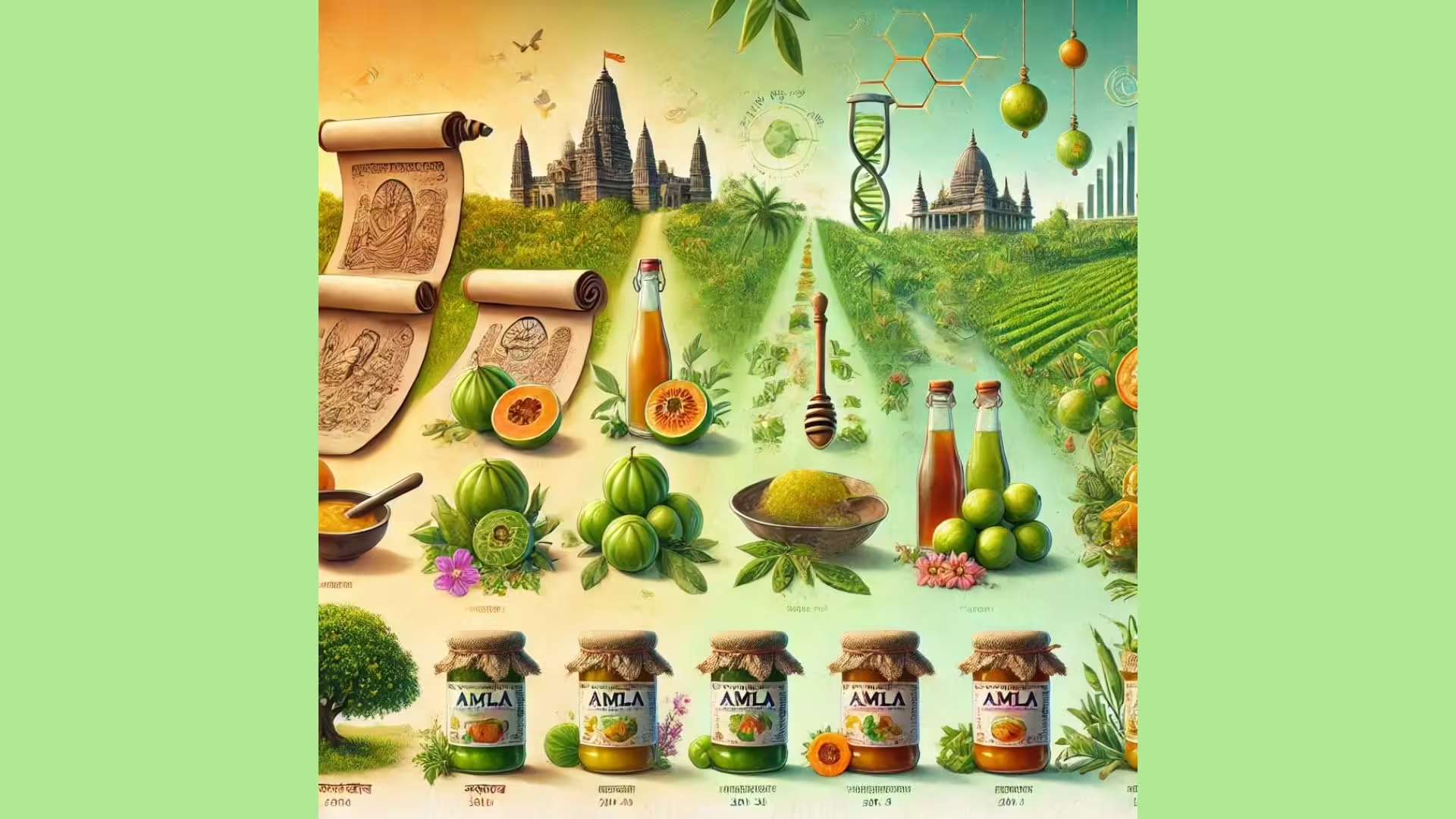Amla, also known as Indian gooseberry, holds a cherished place in Indian culture and tradition. Revered for its incredible health benefits and versatility, this superfruit has been a part of Indian households, medicine, and cuisine for centuries. Let’s explore the fascinating journey of amla through the ages and why it continues to be celebrated today.
The Ancient Roots of Amla
Amla’s history can be traced back thousands of years. In ancient India, it was considered a sacred fruit, often linked to the goddess Lakshmi, symbolizing prosperity and health. References to amla can be found in classical Ayurvedic texts such as the Charaka Samhita and Sushruta Samhita, where it is described as a powerhouse of nutrients and a key ingredient in several medicinal formulations.
Amla in Ayurveda
In Ayurveda, amla is classified as a “Rasayana,” or rejuvenating herb. Its benefits are vast:
- Rich in Vitamin C: Amla is one of the richest natural sources of vitamin C, essential for boosting immunity and combating oxidative stress.
- Balances Doshas: It is said to balance all three doshas—Vata, Pitta, and Kapha—making it a holistic healer.
- Key Ingredient in Chyawanprash: Amla is the star ingredient in chyawanprash, a traditional Ayurvedic tonic that supports longevity and vitality.
Cultural Significance of Amla
The cultural importance of amla extends beyond its health benefits. In Indian tradition:
- Festivals and Rituals: Amla is often used in religious rituals and offerings during certain festivals, symbolizing purity and wellness.
- Folk Remedies: Passed down through generations, amla has been a go-to remedy for ailments like colds, indigestion, and hair care.
Amla in Indian Cuisine
The tangy and slightly bitter flavor of amla makes it a versatile ingredient in Indian cooking:
- Pickles and Chutneys: Amla pickles and chutneys are staples in many Indian households, loved for their bold flavors.
- Juices and Sweets: Amla juice is a popular health drink, while candied amla (murabba) is a sweet treat with nutritional benefits.
- Spices and Preserves: It’s often dried and powdered as a spice or preserved for year-round use.
Modern-Day Rediscovery
In recent years, amla has gained global recognition as a superfood. Its benefits have been backed by scientific research, highlighting its potential to:
- Support heart health by lowering cholesterol levels.
- Improve skin and hair health with its antioxidant properties.
- Aid in digestion and metabolism.
Nainaa’s Kitchen: Celebrating Amla’s Legacy
At Nainaa’s Kitchen, we’re proud to honor this ancient superfruit with our Amla Honey Spread. By blending the tanginess of fresh amla with the natural sweetness of pure honey, we’ve created a product that perfectly balances tradition and modern taste. Whether you’re spreading it on toast or mixing it into smoothies, it’s a delicious way to embrace the goodness of amla.
The Future of Amla
As we look to the future, amla’s legacy as a superfruit continues to grow. Its enduring appeal lies in its ability to adapt to modern lifestyles while staying rooted in traditional wisdom. From ancient Ayurvedic practices to contemporary kitchens, amla remains a symbol of health, vitality, and cultural heritage.
Our Thoughts
Amla’s journey through the ages is a testament to its timeless value. By incorporating this superfruit into your daily life, you’re not just embracing its health benefits but also connecting with a rich cultural and medicinal tradition that has stood the test of time. Here’s to celebrating the wonder of amla—a gift from nature that keeps giving.

 Cart is empty
Cart is empty 



Leave A Comment
You must be logged in to post a comment